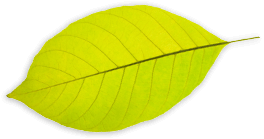Rare as gold

Short’s goldenrod measures a petite 1 inch, but the tiny flower is so important that a 50-plus-acre nature preserve was established to protect it. Listed on the federal Endangered Species list, it is considered one of the world’s rarest flowers and is an important part of Kentucky history.
Blue Licks State Park Nature Preserve, located within Blue Licks Battlefield State Resort Park, is one of only two places in the world where this delicate but showy bloom is known to exist. Louisville physician and botanist Charles Short—after whom the flower is named—discovered the herbaceous perennial wildflower in 1840 at the Falls of the Ohio. Unfortunately, that plant population was eventually lost due to area flooding.
Fast forward about 100 years when botanist and ecologist E. Lucy Braun discovered Short’s goldenrod in Robertson County in 1939, just north of the park’s location in Carlisle in Nicholas County. According to the Blue Licks State Park Nature Preserve brochure, it was Braun who speculated that bison aided in spreading the seeds of this plant.
“Early settlers to Kentucky remarked on the huge herds of buffalo,” says Matthew Dollar, a naturalist at Blue Licks Battlefield State Resort Park, which is served by Fleming-Mason Energy Cooperative. “Kentucky is known for its buffalo traces. They’re all over the state, with the main corridor going through the Blue Licks region.
“It’s a floral and fauna relationship that’s unique to the Bluegrass. Seeds from the goldenrod got caked into buffalo fur and were transported to this region.”
According to Dollar, the best time to see and photograph Short’s goldenrod is August through October. Regularly scheduled guided tours are offered throughout the summer and early fall. The on-site Pioneer Museum interprets the history of Blue Licks.



